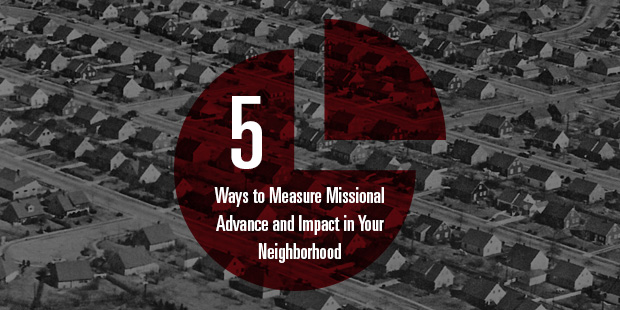
5 Ways to Help You Build a New Team When the Current Team Isn’t Working
So…have you got the right team?
I hear from leaders all the time who say things like:
- I feel like we just don’t have the right leaders in place.
- I’ve got a vision, but I just can’t get it past my team.
- If only we had better people, we’d see a turnaround.
Sometimes leaders will say “Yeah…sure, I’ve got a good team”.
But deep down they’re far from sure. They know it needs to change, but how?
Whether you’re dealing with a staff or volunteer situation, there are almost always people who you know shouldn’t be on the team, so what do you do?
They’re Not All Bad People…Just Not the Right People
It’s hard to figure out who the right people are when you’re in leadership.
In my early days in leadership, I saw things as more black and white. And I made the mistake of personalizing misalignment or disagreement.
You were in or you were out.
You were with us or you were against us.
You were right or you were wrong.
Those views didn’t always leak out publicly, but sometimes they did. And while my views were more nuanced than that, there was more black and white in how I saw opponents than was healthy.
I’ve come to see people very differently over my tenure as a leader.
Just because you disagree with me or our vision doesn’t mean you’re a bad person. It just might mean you’re not right for our team in this season.
The only class of people I think every leader needs to be extremely cautious of are what I call toxic people.
You need to stay away from them and keep them off your team, whatever the cost. The stakes are just too high.
But truly toxic people might represent 1% of the population. (By the way, here are 6 early warning signs you’re dealing with a toxic person.)
Most people aren’t toxic. But that doesn’t mean they are right for your team.
Why Some People Just Don’t Work Out
It’s easy to demonize people you don’t want to work with You’re not always right…and they’re not always wrong.
Sometimes you have the wrong people with the right gifting. That’s often a chemistry or character issue.
Sometimes you have the right people with the wrong gifting. That’s often a competency issue.
Sometimes you have great people with a different vision anddifferent calling. That’s simply a calling issue.
They could be great somewhere else. They just might not be great for your team or organization.
In fact, they would be better off and you would be better off if they moved off.
So how do you do that?
That’s the critical question.
5 Things You Can Do When Your Current Team Isn’t the Right Team
The following principles really work best if you’re going to be in an organization for 5 years or more. I think long term tenure is the best option by far for impact in ministry…here’s why.
Because I’m a church leader, I’ve crafted these for use in a volunteer organization. If you were merely dealing with paid staff, you could effect change faster.
That said, you can get a new team in place within 2 years and have your culture changed radically within 5 years, even in a slow moving church culture. At least that’s been my experience 19 years into leadership.
1. Get permission to find some fresh leaders
Chances are the team you have when you started is a team you inherited.
Even if you’re working in a church plant or start up, cracks in your launch team become visible within a year. You likely want to make changes.
It’s bad leadership to do end runs around people.
When I started 19 years ago leading three small churches that were (honestly) dying, we started with an honest conversation.
We talked honestly about the need for a new day, and they bought into the idea of creating a new team to run alongside them filled with the best leadership I could find in the church. The purpose of the team? To create a plan for a better future for our church that they, the elders, could approve or revise.
I realize a lot of you might think “that will never work in my context.” I get that.
But doing an end run around your current leadership behind the scenes creates a culture of mistrust you will never escape.
And if they say no after you have an honest, humble, prayerful set of conversations…well, you then know where you stand.
Maybe you’re the member of the team that doesn’t fit. And it’s time to move on.
But you’ll be surprised how often they see the issues you see, and are relieved you’re leading them to a new day.
2. Find the kind of leaders you can build the future of the church on
Sometimes you need to work outside the existing leadership to build a better future.
Do it honestly and openly.
I built a vision team when I first started in those three churches. I found the most future-thinking kind of people I could find and called them together with our most progressive existing leadership to carve out a future.
My simple criteria: are these the kind of people we can build the future of the church on?
If you start asking that question, you’ll be amazed at how clarifying it is about who you need to recruit into leadership.
3. Affirm people. Attack problems.
Your attitude is as important as the action you take when leading change.
It’s easy to attack people. That’s always a mistake.
Affirm people, attack problems.
If you do this, you will win over many friends, leave people with their dignity AND you will learn something in the process. You’re not always right.
Best yet, when you attack problems, you can often find that some people who were off-mission become on-mission because they are galvinized around a clear problem and call to action.
You’ll be surprised at how many great things happen when you attack problems, not people. I explain this concept in great detail in my book about how to lead change in the face of opposition.
4. Honour the past without living in it.
You will feel a temptation to dismiss everything that happened before you became the leader as ‘bad’ or inferior.
Don’t.
Stay in leadership long enough, and you’ll realize you’ve done some things that are actually bad or inferior too.
The people you inherited as a leader were often doing their best.
The team you have now probably cares deeply about what they’re doing.
Honour that. Affirm that.
Even if they are not the kind of people you can build the future of the church on. Let them know how much you appreciate their hard work, commitment and dedication. Here’s the truth, you would not be standing on anything right now as a leader if they had given up long ago. At least you have a foundation on which to build.
So honour them.
Honour the past without living in it.
Leverage what has been to help usher in what will be.
We ushered in massive change in the first 5 years of my leadership in a local church. We changed pretty much everything.
Some people left. But many stayed. At a conference I did one year, we brought up everyone who had been at the church when I started and celebrated them as ‘The Originals” —people who paved the way for a better future and were committed to bringing it about. They got a standing ovation from the crowd gathered that day.
Even though most of them were no longer in the leadership role they used to be in, they felt honoured because they were honoured.
5. Find new seats for people.
Just because someone shouldn’t be on staff anymore, or isn’t an elder anymore, people of character will stay on and serve in different roles more suited to their gifting if you give them the chance.
Sure…some will leave.
A friend of mine once told me “What people become involved in becomes the mission.” And this is true. That’s why so many people leave a church when they no longer serve in it (I wrote about 9 reasons why this happens in this post).
Your job as a leader is to help them find a new seat on the bus that fits them better than their current role.
The best way to do that is to honour them and keep talking about the urgency of a mission and vision.
And if the person or group you’re working with isn’t toxic, often they are excited to still support the mission and vision in a new role.
If it turns out their service was all about them and not about the mission and vision, you’ll learn that soon enough: they won’t take another seat. But again, you’ll be surprised how many will.
Do these 5 steps guarantee everyone will stay? Not a chance.
But many will.
And they can help you build a new team when your current team isn’t the right team.
And practicing them over the years has led me to the place where I am thrilled with the team of staff and volunteer leaders we have.
What are you learning about getting the right people in place?

Tags: Carey Nieuwhof, Teams, Volunteer teams































